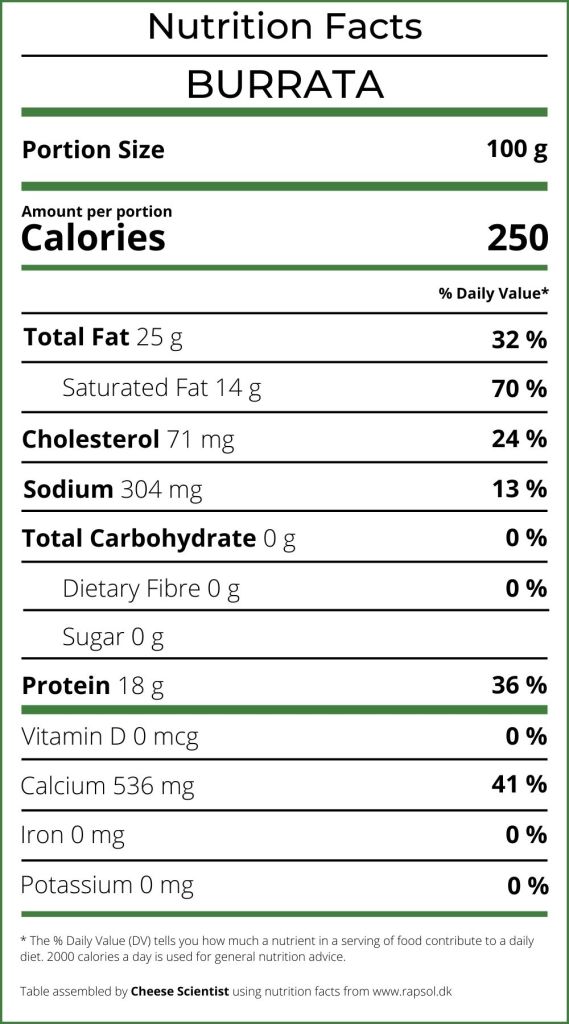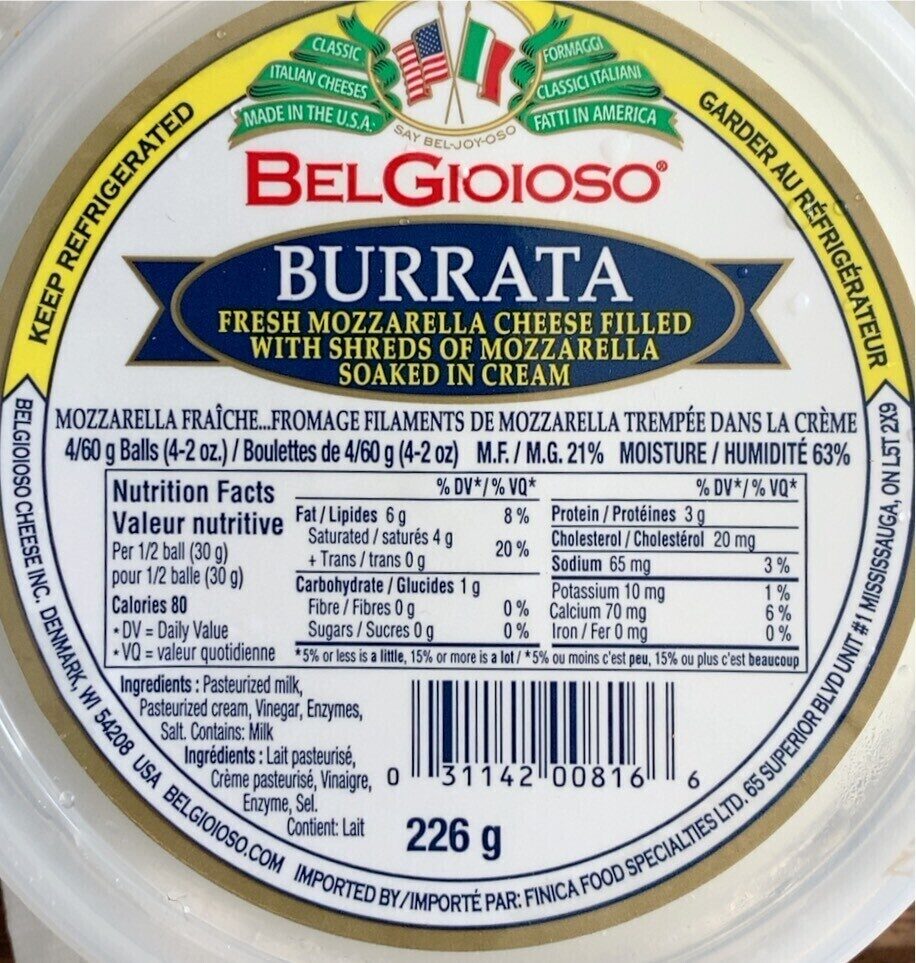Alright, so I’ve been on a bit of a burrata kick lately. You know, that creamy, dreamy cheese that just oozes deliciousness. I bought some the other week, and then again, and well, it started becoming a regular thing. One evening, after enjoying a rather generous portion with some crusty bread and tomatoes, I got to thinking, “Hang on a minute, what am I actually putting into my body here?” It tasted amazing, no doubt, but I figured I should probably get a handle on the burrata nutrition facts before I went overboard.

My Little Investigation
So, the next morning, coffee in hand, I decided to do a little digging. My first stop was the packaging from the last burrata I bought. Sometimes you get lucky and there’s a decent label. This one was a bit sparse, gave me the basics like serving size and calories, but I wanted a bit more detail. You know, the full picture.
Next, I fired up my laptop. Typed in “burrata nutrition facts” into the search bar. And boy, did a lot of stuff pop up. Some sites looked super technical, others were clearly trying to sell me something. I just wanted straight-up information, no frills.
I started clicking through, looking for reliable sources. You know, things that looked like they came from food databases or health sites that weren’t pushing some fad diet. It took a bit of sifting, I tell ya. Some info was for a tiny serving, others for a whole giant ball. I had to kind of piece things together to get a general idea for the amount I’d typically eat.
What I Found Out (The Gist)
So, after a bit of reading and comparing, here’s what I gathered. And look, I’m no dietitian, this is just what I pieced together for my own understanding.
- Calories: Yeah, it’s cheese, and it’s got that creamy center. So, it’s not exactly a low-calorie food. You gotta be mindful of how much you’re scooping onto your plate. That deliciousness comes at a price, calorically speaking.
- Fat Content: This was the big one for me. Burrata is rich, and that richness comes from fat, especially saturated fat. The creamy stracciatella and cream filling are a dead giveaway. Again, not a shocker, but good to be aware of.
- Protein: On the upside, like most cheeses, it does offer a decent amount of protein. So, it’s not all just fat and air. Protein is good, helps keep you full.
- Sodium: Cheese, in general, can be a bit on the salty side, and burrata is no exception. Something to keep in mind if you’re watching your sodium intake. I noticed this can vary a bit from brand to brand, too.
- Calcium: Being a dairy product, it’s got calcium. Good for the bones, right? So that’s a plus.
My Takeaway from All This
So, what did I do with this newfound knowledge? Did I swear off burrata forever? Absolutely not! That stuff is just too good. But, I did make a few mental adjustments.

For me, burrata has shifted from an “anytime” food to more of a “treat” or something I’ll have in moderation. Before, I might have eaten half a ball myself without thinking twice. Now, I’m more likely to share it, or use a smaller amount to get that creamy hit without going completely overboard on the calories and fat for one meal.
I also started paying more attention to what else I’m eating on days I have burrata. Maybe I’ll go a bit lighter on other rich foods that day. It’s all about balance, isn’t it? I’m not about to start meticulously counting every single thing, life’s too short for that stress. But having a general idea helps me make better choices, or at least, more informed ones.
So, that was my little journey into the world of burrata nutrition. It wasn’t rocket science, just a bit of practical looking-things-up. Hope my experience helps if you’ve been wondering about it too!









